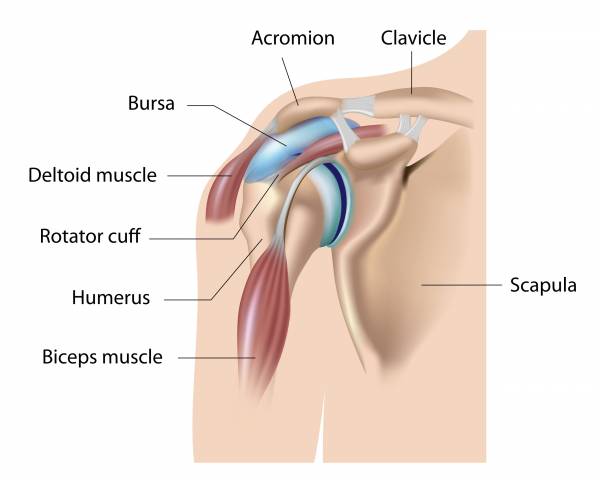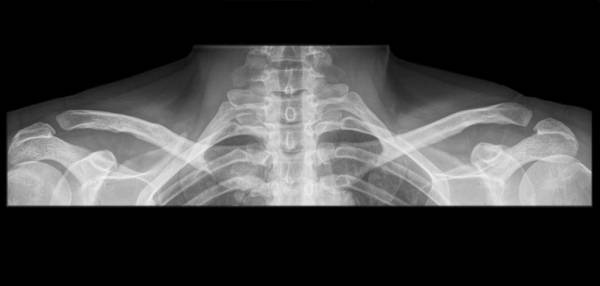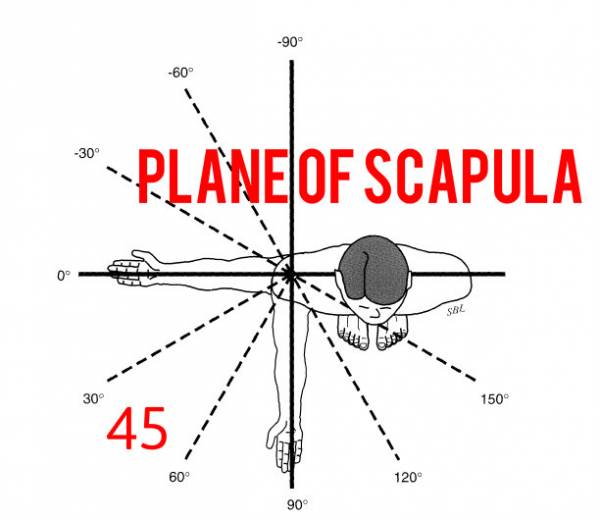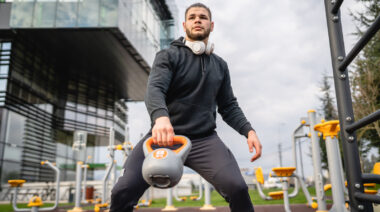With a background as a former orthopedic physical therapist, I’ve treated many shoulder injuries throughout my career. I’ve seen almost every shoulder pathology and dysfunction you could think of from major post-operative cases to sports-related or recreational injuries.
Here’s what I discovered about the shoulder. It’s a dynamic and amazing joint and we need to keep it as strong, mobile, and stable as we possible can. We need to balance the extensive network of shoulder complex muscles effectively in order to minimize our risk for injury. I’m all for training hard and intense, but we also need to work towards bulletproofing our bodies as we work towards our goals. But before we discuss a few of the most common shoulder injuries, we need a quick crash course in basic anatomy.
Functional Anatomy of the Shoulder
The shoulder complex collectively consists of the glenohumeral (GH) joint, the acromioclavicular (AC) joint, the sternoclavicular (SC) joint, and the scapulothoracic joint (or articulation – this is not true a joint).
There are a large number of muscles involved in optimal shoulder joint function. The rotator cuff (RTC) muscles are vital for the normal joint mechanics of the shoulder. The RTC is also a common area of dysfunction. It consists of only four muscles: the supraspinatus, infraspinatus, subscapularis, and teres minor. The supraspinatus is typically the affected muscle because of its anatomical location – it represents the superior aspect (top) of the RTC muscle group.
These important shoulder muscles allow for dynamic stability and mobility. This is a key concept to understand. What these four muscles essentially do is maintain the humeral head (ball) in the glenoid (socket) during arm movements. The ball and socket is the glenohumeral (GH) joint. Let me repeat, the RTC keeps the ball in the socket and is a major contributor to optimizing the joint mechanics, when healthy and strong. If there is muscle weakness, imbalance, or dysfunction of the RTC, the mobility and stability of the shoulder joint will be compromised.
I should mention the other major muscles that are important for optimal shoulder joint function. These are the deltoids, the long head of the biceps, the latisimus dorsi, the pectoralis major, teres major, coracobrachialis, and long head of the triceps. And, finally, there are the important scapular (shoulder blade) muscles, which include the serratus anterior, trapezius, rhomboids, pec minor, and levator scapulae. The role of the scapula is also critical in the stability and mobility of the shoulder joint because if the scapular mechanics are weak, the base of stability in the shoulder joint will be inefficient in it’s function.
A few other things to mention are the acromion and the coracoarcomial arch. You’ll see why these are important in just a minute. The acromion is a bony process on the tip of the scapula (shoulder blade). It forms the AC joint (acromioclavicular joint) and forms the superior bony aspect (top) above the supraspinatus. The coracoacromial arch is a protective arch formed by the smooth inferior aspect of the acromion and the coracoid process of the scapula with the coracoacromial ligament spanning between them.

Common Shoulder Injuries
Many shoulder injuries are preventable by strengthening the RTC and scapular musculature, while maintaining joint mobility and stability. But it’s important to perform the right types of exercises and avoid poor technique faults and training methods.
Rotator Cuff Injuries
The majority of shoulder problems in athletes and the general population are related to rotator cuff dysfunction. Repetitive trauma leading to inflammation is one causative factor in RTC injury, potentially leading to a tear of the RTC musculature. It should also be noted that RTC tears can be present and completely asymptomatic, meaning there is no pain. This was demonstrated in a large observational study in the general population.
Impingement
This is an encroachment of the subacromial space on the supraspinatus and often the biceps tendon, as well. RTC impingement can be a result of mechanical wear of the cuff under the coracoacromial arch. This has been described as a primary cause. Other contributing causes are degenerative changes to the RTC (which is inevitable as we age) and also an abnormal pathology of the acromion (structural defect).
Instability
This occurs when the shoulder joint deviates out of its normal position (the humeral head moves out of the glenoid). This can be a minor shift in movement, which is called a subluxation, or can result in a more severe dislocation in the shoulder. Individuals suffering from an instability problem will experience pain with active elevation of the arm and may feel as if the shoulder is slipping or moving out of place.

7 Key Exercises for the Shoulder
Here are what I believe are some of the best exercises performed with a kettlebell to prevent shoulder dysfunction and injury. The kettlebell is a wonderful tool for optimizing shoulder health. Many of these will help to improve or restore mobility, stability, and optimize RTC strength, as well as the entire shoulder complex. Listed below each exercise will be a recommended rep scheme to use as a pre-workout mobility program or warm up.
Any exercise listed here must be done in a pain-free range of motion. This should be obvious, but it’s worth mentioning that any exercise that induces pain is not a good exercise and should be avoided.
1. Turkish Get Up
Arguably, the Turkish get up (TGU) is the most important of these exercises. The TGU enhances and optimizes RTC function by moving through a broad range of motion, while the RTC is firing and stabilizing the entire time. The TGU and its component parts are what I consider to be the staple for maximizing shoulder joint health and function. Not only does it fire the RTC the entire time, but the weight bearing positions are outstanding for scapular stability and strength. The important thing is to get this exercise right and not rush it as you’re moving through each transition in a slow, controlled motion.
Perform 2-5 reps, either unweighted or with light weight, prior to beginning your training session.
2. Windmill
Performing the kettlebell windmill requires a dynamic range of motion, mobility, and stability. While it’s also great for the hip and spine strength and stability, I include it on this list for the same reason as the TGU. As you move throughout the windmill, the RTC must constantly fire and stabilize the humeral head through the wide range of motion.
Perform 3-5 reps per side with a light sized kettlebell.
3. Armbar
The kettlebell armbar has similar benefits to the exercises above, but there are some differences. The shoulder mobility is not as dynamic as with the TGU and windmill, but the stability and proprioceptive benefits (knowing where your arm is in space) are outstanding. Also, it really opens up the anterior portions of the shoulder complex (anterior glenohumoral joint, pecs, and rib cage). For tight pectorals and forward rounded shoulders, this is a fantastic mobilization. The armbar is also outstanding for thoracic mobility, which is something we all need to maintain or potentially improve.
5-10 reps or mobilizations per side with a light to moderate size is acceptable.
4. Military Press
The kettlebell military press is excellent for total shoulder strength, but has the mobility and stability elements to it, as well. The key is to perform the shoulder press in the plane of the scapula, which is approximately thirty to 45 degrees anterior to the frontal plane (see picture). Basically, your arm is not positioned straight out to the side and it’s not straight out in front of you.

Keeping the press in the plane of the scapula is not only safe, but is the most functional and biomechanically efficient position for the shoulder to effectively press. For example, think of a barbell press in which your shoulder is taken back out of the plane of the scapula to hold the barbell in position and press overhead. In contrast, you can press the kettlebell in the natural groove. The kettlebell press is excellent for the shoulder complex and incorporates not only the RTC, but also all shoulder musculature for stability, mobility, and strength.
Perform 2 sets of 5 per side with a light kettlebell prior to your session to set the groove and properly activate the shoulder complex muscles.
5. Swing
This may come as a surprise, but the kettlebell swing is fantastic for the RTC. The entire time you are swinging the kettlebell, the RTC is firing to stabilize the shoulder joint and maintain the humoral head in the glenoid. And, it’s doing this is a non-stressful, non-aggressive way. Remember, in the Russian style swing the shoulders (especially the deltoids) aren’t really active, but there is demand on the upper extremities and the RTC muscles to contract continuously to hold the shoulder in place. From a standpoint of strengthening the RTC, the kettlebell swing is an excellent exercise to optimize shoulder health, even though we don’t typically think of it that way.
Perform 2-3 sets of 5-10 one hand swings prior to your training session. Consider this part of your warm up program to activate the shoulders.
6. Halo
The halo is a very effective mobility exercise for the shoulder (GH joint) and the thoracic spine. It’s also easy to do. The halo should be considered a standard mobility exercise for the shoulder complex. While it doesn’t offer the strength benefits of some of the other exercises listed here, it’s outstanding for the GH joint mobility, with the added benefit of opening up the thoracic spine.
5-10 halos each direction with a lighter size kettlebell.
7. Snatch
The kettlebell snatch is a high-level exercise, not just for the shoulders, but also for the entire body. There can be no argument that the snatch is an extremely powerful and dynamic exercise for the shoulder complex when properly performed. Assuming there is no shoulder injury or dysfunction, snatching a kettlebell overhead is a proven way to develop the shoulders and improve shoulder joint mobility and stability.
2-3 sets of 5 reps per arm with a light to medium sized kettlebell prior to a training session is an excellent way to prime the shoulders.
Putting It All Together
I’ve found these types of exercises are some of the best ways to improve shoulder function, improve RTC strength, and minimize risk for injury, when executed with proper technique in combination with smart programming. To maximize shoulder health, we could also add more scapular stabilization work in addition the exercises above. Things such as planks, TRX scapular retraction, bat wings, and push ups with scapular protraction are a few examples. This would be necessary if scapular weakness or dysfunction was noted.
To minimize our risk for injury, we need to keep our RTC and all of our shoulder stabilizers strong and healthy. These are seven great examples of shoulder stability and mobility training. If you had to pick one, I would consider the TGU as the mother of all shoulder exercises because of the unique benefits it offers, in terms of mobility, stability, and strength. But you should pick the exercises that are appropriate for you. I hope this serves you well as a simple guide for optimizing the health of your shoulders.
References:
1. A. Yamamoto et al., “Prevalence and risk factors of a rotator cuff tear in the general population,” Journal of Shoulder and Elbow Surgery 2010 Jan;19(1):116-20.
Photos 1-3 courtesy of Shutterstock.






